GALKA SCHEYER
April 7 – Sept. 25, 2017 Pasadena, CA
The NORTON SIMON MUSEUM
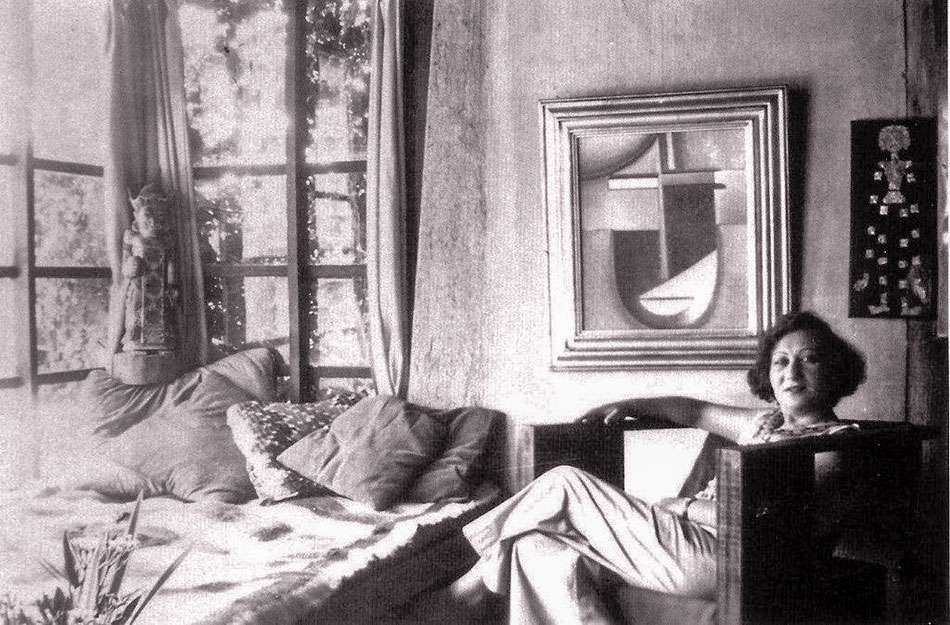
Galka Scheyer at Kings Road, circa 1931. (From Life at Kings Road As It Was 1920-1940 by Robert Sweeney, p. 108 in the 2001 MOCA exhibition catalog The Architecture of R. M. Schindler).
The life of Galka Scheyer
Responsible for the art phenomenon “ The Blue Four”:
Lyonel Feininger, Alexei Jawlensky, Paul Klee and Wassily Kandinsky
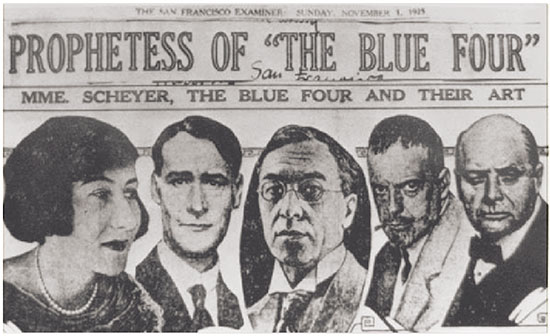
Maven of Modernism Exhibition presents exceptional examples from Scheyer’s personal collection by the Blue Four artists. All together, these works and related ephemera tell the fascinating story of this trailblazing impresario, who helped shape California’s reputation as a burgeoning center for modern art. IMAGE: “Prophetess of the Blue Four,” published on San Francisco Examiner, November 1, 1925. Pictured: Galka Scheyer, Lyonel Feininger, Wassily Kandinsky, Paul Klee and Alexei Jawlensky.
How she became a Great Art Dealer
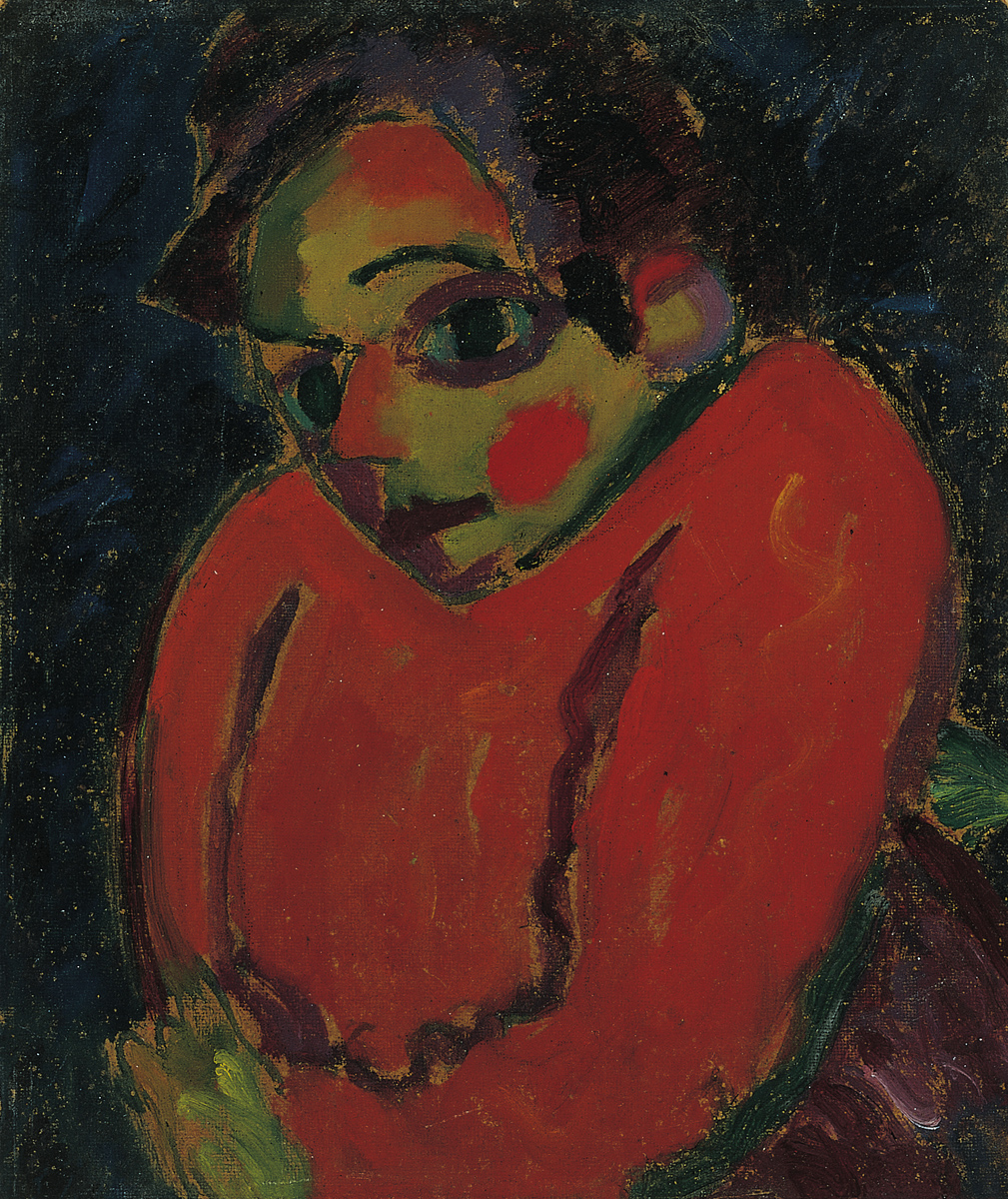 Galka Scheyer was born Emilie Esther Scheyer in Braunschweig, Germany, in 1889, to a middle-class Jewish family. As a young woman, she studied piano and painting, but the direction of Emilie’s life changed course wen she saw “The Hunchback” painting by Alexei Jawlensky in 1916 in an exhibition in Lausanne.
Galka Scheyer was born Emilie Esther Scheyer in Braunschweig, Germany, in 1889, to a middle-class Jewish family. As a young woman, she studied piano and painting, but the direction of Emilie’s life changed course wen she saw “The Hunchback” painting by Alexei Jawlensky in 1916 in an exhibition in Lausanne.
She wanted to give up painting herself and dedicate herself to Jawlensky art. “Why should I go on painting when I know I can’t produce such good art as you?” she asked.”It’s better I dedicate myself to your art and explain it to others.” And indeed ever since that time she has occupied herself to promoting artists with great understanding. IMAGE: The Hunchback, 1917, Alexei Jawlensky (Russian, 1864-1941) Oil and pencil on textured cardboard 9-3/4 x 8-1/4 in. (24.8 x 21.0 cm) Norton Simon Museum, The Blue Four Galka Scheyer Collection © Norton Simon Museum
Emili became Galka. Indeed, it was Jawlensky who nicknamed Scheyer “Galka,” the Russian word for jackdaw, a gregarious, intelligent crow. In the years that followed, Scheyer became closely associated with Jawlensky and the artists Feininger, Klee and Kandinsky, whom she named the “Blue Four” as she set out to promote their work in the United States Head in1924.
1925, she moved to California
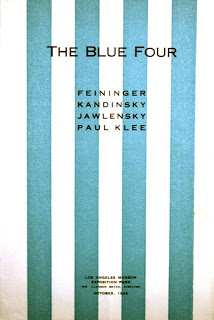 Scheyer found fertile ground for her mission when, in 1925, she moved to California and discovered an enthusiastic audience for her innovative artists and her activities as their representative.
Scheyer found fertile ground for her mission when, in 1925, she moved to California and discovered an enthusiastic audience for her innovative artists and her activities as their representative.
In San Francisco, she quickly gathered important friends around her, including William H. Clapp of the Oakland Art Museum, Imogen Cunningham, Edward Weston, Frida Kahlo and Rivera.
Moving to Los Angeles in 1930 enlarged the social and cultural network in which she circulated, connecting her to John Cage, Walter and Louise Arensberg, Josef von Sternberg, Peter Krasnow and a host of German émigré artists. Her Hollywood home, designed by Richard Neutra, functioned as a meeting place and gallery for a cadre of art aficionados.
Through the troubling decades of the Great Depression and the Second World War, Scheyer single-handedly cultivated a taste for their brand of European modernism by arranging exhibitions, lectures and publications on their work, and negotiating sales on their behalf.
Exhibition Highlights
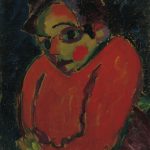 Each object in the exhibition Maven of Modernism relates to Scheyer in a personal and meaningful way. From the Blue Four artists, for example, the exhibition presents the rarely seen Jawlensky painting “The Hunchback,” given by the artist to Scheyer in 1917 and based on the same work that she dearly admired when she visited the 1915 “Exhibition of Contemporary Russian Artists,”
Each object in the exhibition Maven of Modernism relates to Scheyer in a personal and meaningful way. From the Blue Four artists, for example, the exhibition presents the rarely seen Jawlensky painting “The Hunchback,” given by the artist to Scheyer in 1917 and based on the same work that she dearly admired when she visited the 1915 “Exhibition of Contemporary Russian Artists,”
Kandinsky’s “Heavy Circles” 1927. One of the most recognizable works in the Museum’s Blue Four holdings, was given to Scheyer by the artist as a gesture of friendship.
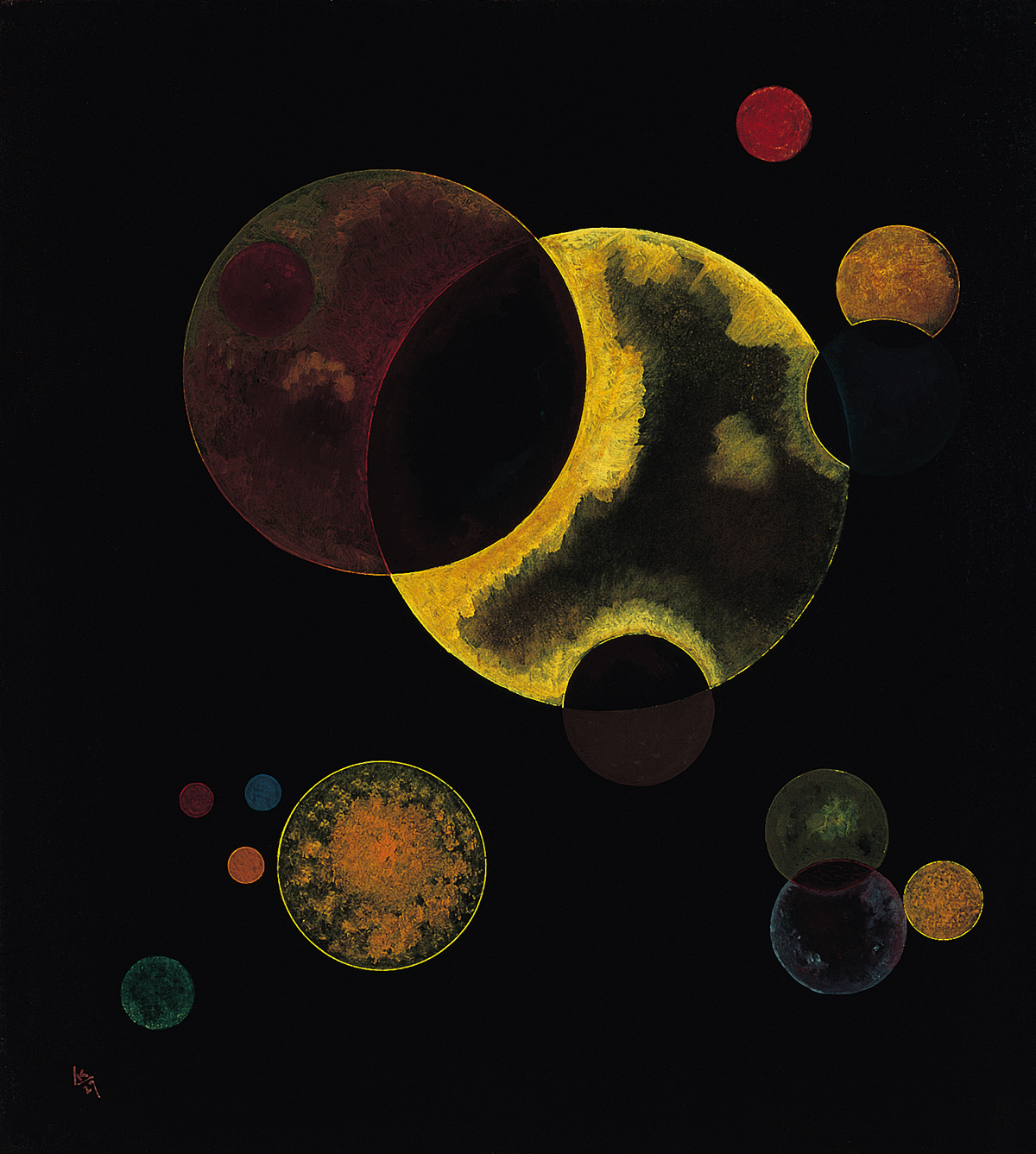 HEAVY CIRCLES, 1927, VASILY KANDINSKY (Russian, 1866-1944) Oil on canvas, 22-1/2 x 20-1/2 in. (57.2 x 52.1 cm) Norton Simon Museum, The Blue Four Galka Scheyer Collection, © Norton Simon Museum
HEAVY CIRCLES, 1927, VASILY KANDINSKY (Russian, 1866-1944) Oil on canvas, 22-1/2 x 20-1/2 in. (57.2 x 52.1 cm) Norton Simon Museum, The Blue Four Galka Scheyer Collection, © Norton Simon Museum
Feininger’s “Untitled,” 1945, was sent to Scheyer after he learned of her diagnosis of cancer, along with a letter stating “It is enough to make one want to shed tears, when we think of you suffering, with your deep love for Art the only thing that keeps your chin up….”
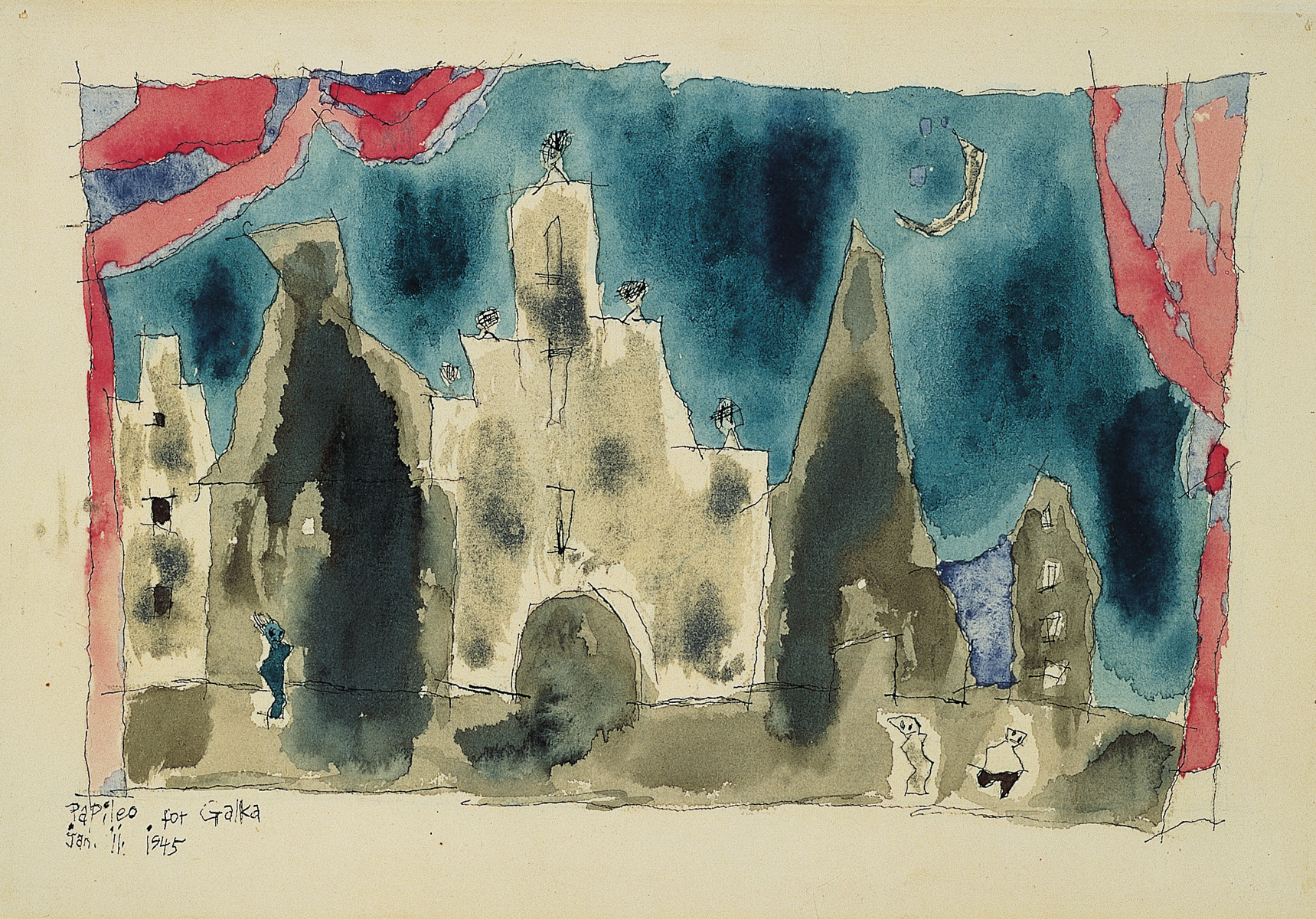 UNTITLED, c.1945. LYONEL FEININGER (American, 1871-1956) Watercolor, silver pigment and India ink on laid paper, 8-5/8 x 12-1/2 in. (21.9 x 31.8 cm) Norton Simon Museum, The Blue Four Galka Scheyer Collection © 2017 Artists Rights Society (ARS), New York / VG Bild-Kunst, Bonn
UNTITLED, c.1945. LYONEL FEININGER (American, 1871-1956) Watercolor, silver pigment and India ink on laid paper, 8-5/8 x 12-1/2 in. (21.9 x 31.8 cm) Norton Simon Museum, The Blue Four Galka Scheyer Collection © 2017 Artists Rights Society (ARS), New York / VG Bild-Kunst, Bonn
 Klee’s “Possibilities at Sea,” 1932, another standout in the Museum’s collection, was so beloved to Scheyer that she negotiated its purchase from Klee, writing “It is one of the most amazing pictures I have ever experienced.”
Klee’s “Possibilities at Sea,” 1932, another standout in the Museum’s collection, was so beloved to Scheyer that she negotiated its purchase from Klee, writing “It is one of the most amazing pictures I have ever experienced.”
POSSIBILITIES AT SEA, 1932, PAUL KLEE (Swiss, 1879-1940) Encaustic and sand on canvas, 38-1/4 x 37-5/8 in. (97.2 x 95.6 cm) Norton Simon Museum, The Blue Four Galka Scheyer Collection © Norton Simon Museum
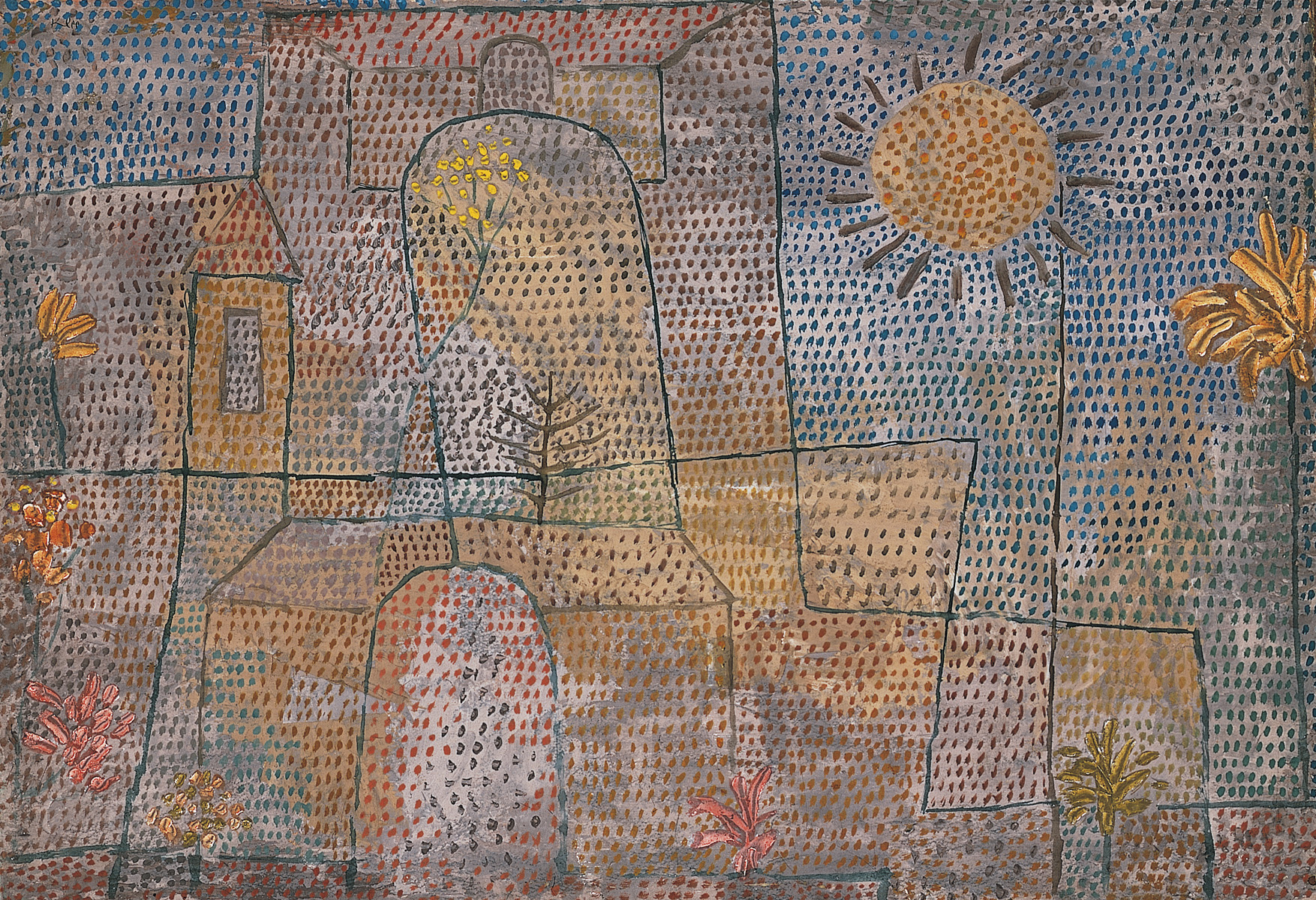 PLANTS IN THE COURTYARD, 1932, PAUL KLEE (Swiss, 1879-1940) Oil and gouache on heavy wove paper mounted (not by the artist) on board, sheet: 14-3/4 x 21-1/8 in. (37.5 x 53.7 cm) Norton Simon Museum, The Blue Four Galka Scheyer Collection © Norton Simon Museum
PLANTS IN THE COURTYARD, 1932, PAUL KLEE (Swiss, 1879-1940) Oil and gouache on heavy wove paper mounted (not by the artist) on board, sheet: 14-3/4 x 21-1/8 in. (37.5 x 53.7 cm) Norton Simon Museum, The Blue Four Galka Scheyer Collection © Norton Simon Museum
Galka: Art Dealer and Collector
While Scheyer is well known for her support of the Blue Four artists, lesser known is that she built an impressive collection of works by other leading contemporary artists, developed out of her friendships and many social encounters. Highlights in the exhibition include Rivera’s “Blue Boy with the Banana,” 1931, which was acquired by Scheyer during her stay with Rivera and Kahlo in Mexico City in the early 1930s.
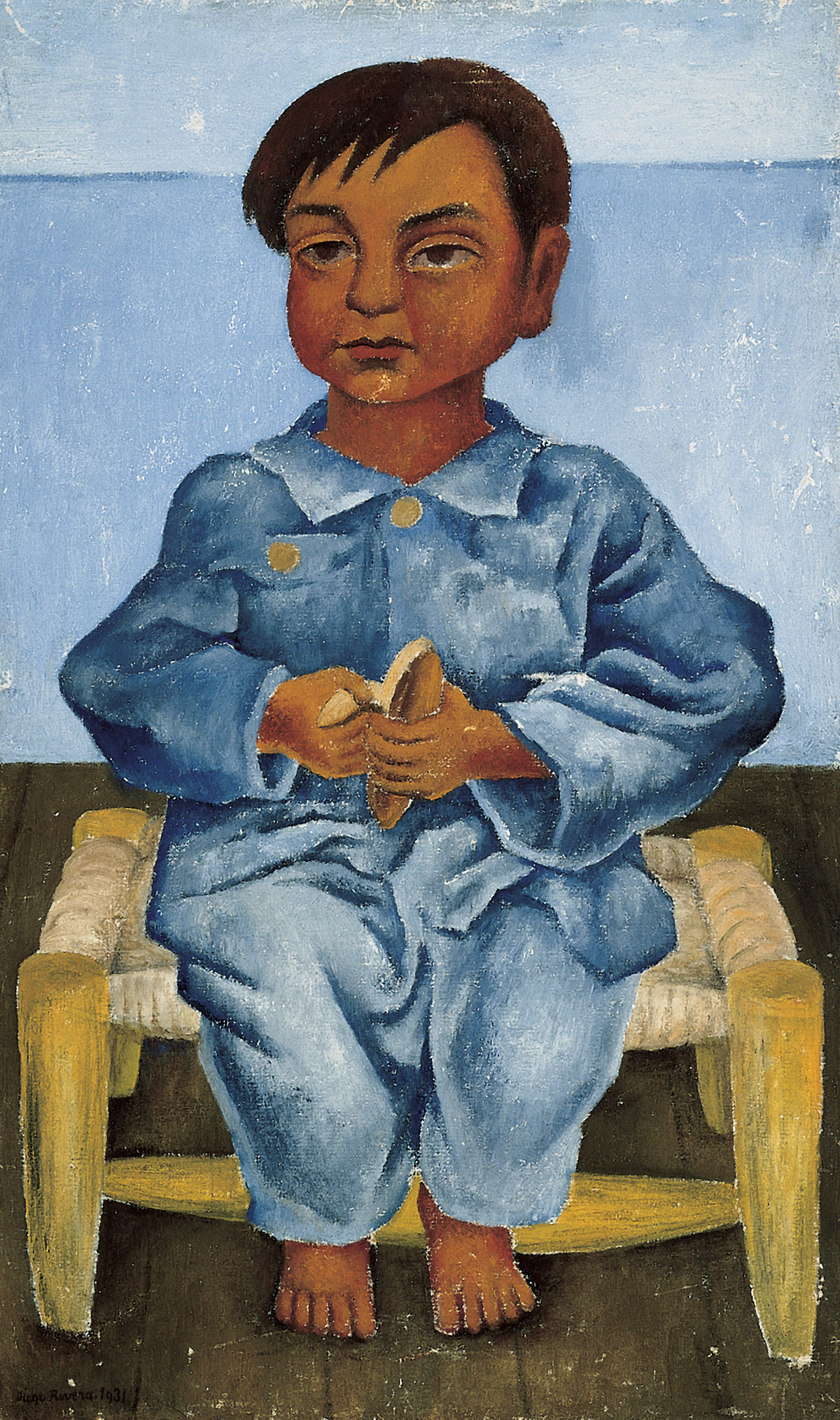 BLUE BOY WITH BANANA, 1931, DIEGO RIVERA (Mexican, 1886-1957) Oil on canvas, Norton Simon Museum, The Blue Four Galka Scheyer Collection © 2017 Banco de México Diego Rivera Frida Kahlo Museums Trust, Mexico, D.F. / Artists Rights Society (ARS), New York
BLUE BOY WITH BANANA, 1931, DIEGO RIVERA (Mexican, 1886-1957) Oil on canvas, Norton Simon Museum, The Blue Four Galka Scheyer Collection © 2017 Banco de México Diego Rivera Frida Kahlo Museums Trust, Mexico, D.F. / Artists Rights Society (ARS), New York
Weston’s “Two Shells,” 1927, was given to Scheyer as a gift from the artist in 1927, not long after the two met at a party given by his neighbor, Peter Krasnow.
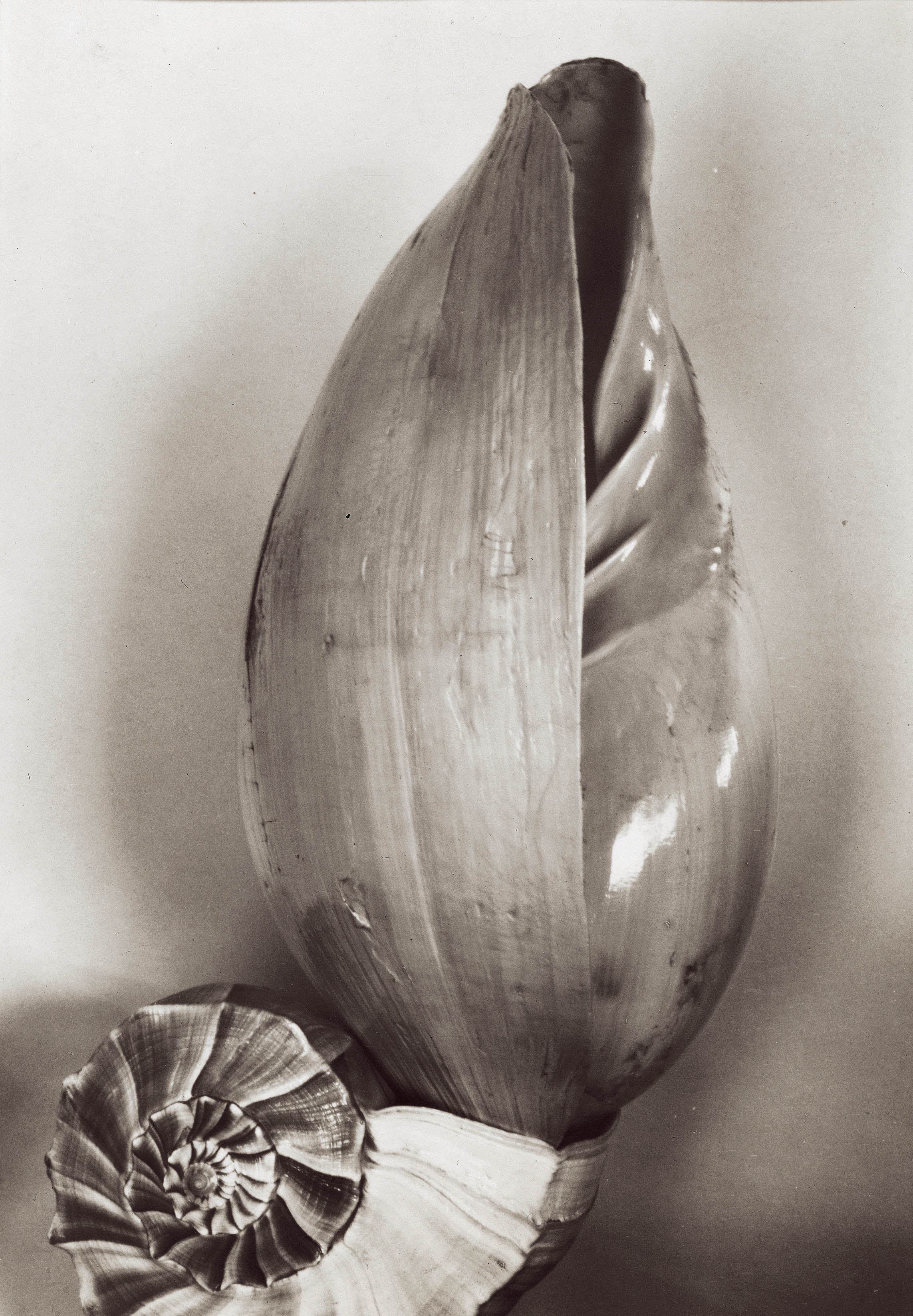 TWO SHELLS, 1927, EDWARD WESTON (American, 1886-1958) Gelatin silver print, Image: 9-5/16 x 6-1/2 in. (23.7 x 16.5 cm) Norton Simon Museum, The Blue Four Galka Scheyer Collection © 2017 Center for Creative Photography, Arizona Board of Regents
TWO SHELLS, 1927, EDWARD WESTON (American, 1886-1958) Gelatin silver print, Image: 9-5/16 x 6-1/2 in. (23.7 x 16.5 cm) Norton Simon Museum, The Blue Four Galka Scheyer Collection © 2017 Center for Creative Photography, Arizona Board of Regents
Krasnow’s illustrative watercolor “Recalling Happy Memories,” c. 1927, also gifted to Scheyer by the artist, depicts Scheyer lecturing to a small gathering, holding a painting in her left hand and a pointer in her right, with the four blue lines, recognized as symbols of the Blue Four artists, painted in the upper right-hand corner.
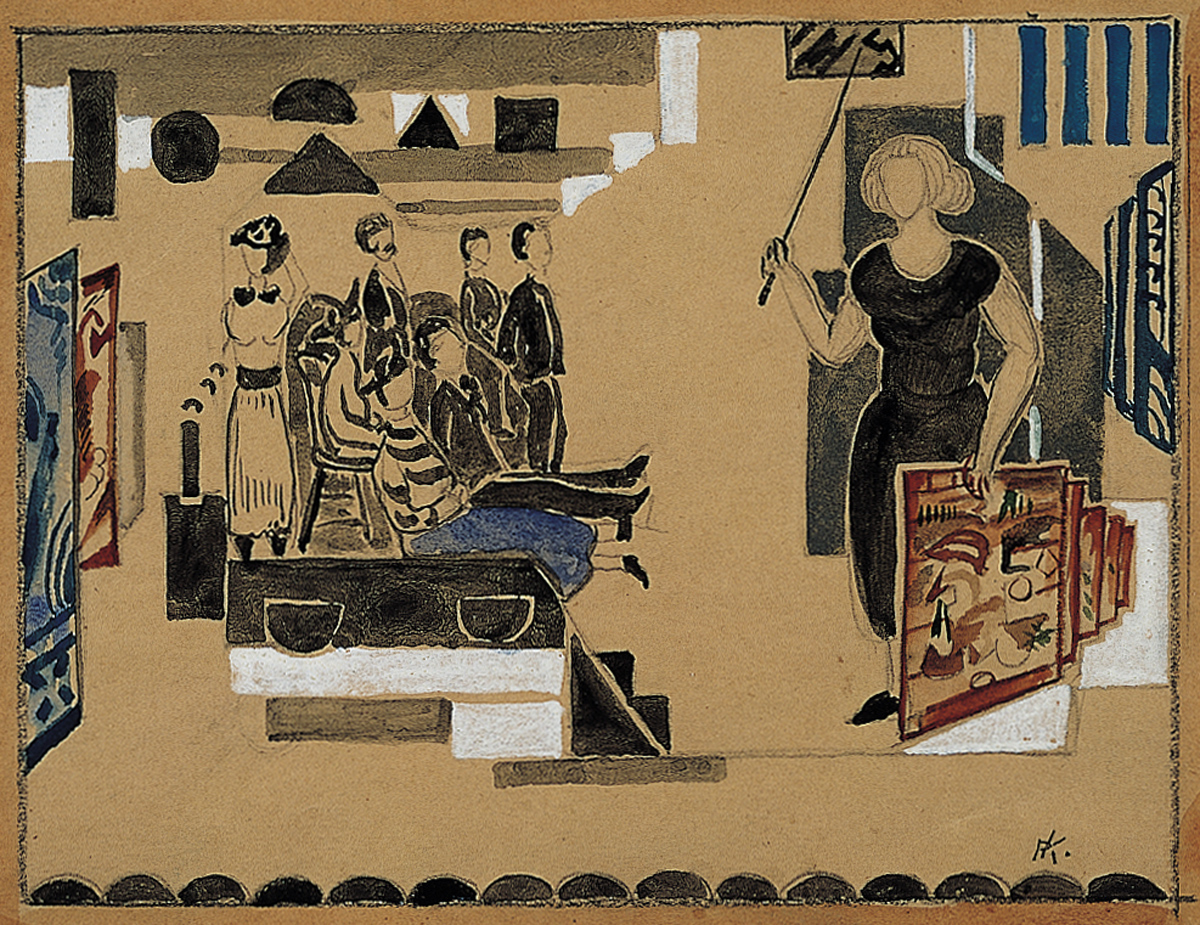 RECALLING HAPPY MEMORIES, c. 1927, PETER KRASNOW (American, 1886-1979) Watercolor, silver pigment and pencil on wove paper, 5 x 6-3/8 in. (12.7 x 16.2 cm) Norton Simon Museum, The Blue Four Galka Scheyer Collection © Estate of Peter Krasnow
RECALLING HAPPY MEMORIES, c. 1927, PETER KRASNOW (American, 1886-1979) Watercolor, silver pigment and pencil on wove paper, 5 x 6-3/8 in. (12.7 x 16.2 cm) Norton Simon Museum, The Blue Four Galka Scheyer Collection © Estate of Peter Krasnow
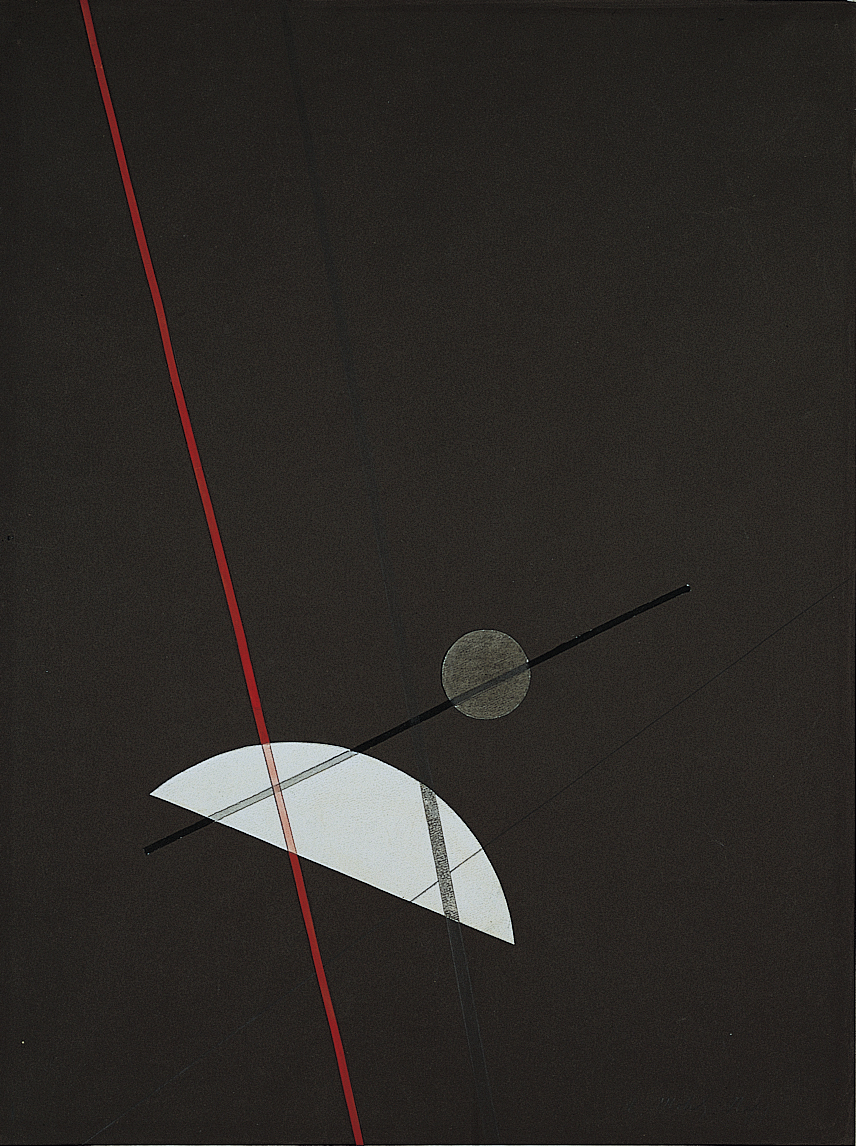 UNTITLED (Ohne Titel),1922-1923. LÁZLÓ MOHOLY-NAGY (American, 1895-1946) Gouache, watercolor, pencil, charcoal and pasted paper on black wove paper 25-3/4 x 19-1/2 in. (65.4 x 49.5 cm) Norton Simon Museum, The Blue Four Galka Scheyer Collection © 2017 Artists Rights Society (ARS), New York / VG Bild-Kunst, Bonn
UNTITLED (Ohne Titel),1922-1923. LÁZLÓ MOHOLY-NAGY (American, 1895-1946) Gouache, watercolor, pencil, charcoal and pasted paper on black wove paper 25-3/4 x 19-1/2 in. (65.4 x 49.5 cm) Norton Simon Museum, The Blue Four Galka Scheyer Collection © 2017 Artists Rights Society (ARS), New York / VG Bild-Kunst, Bonn
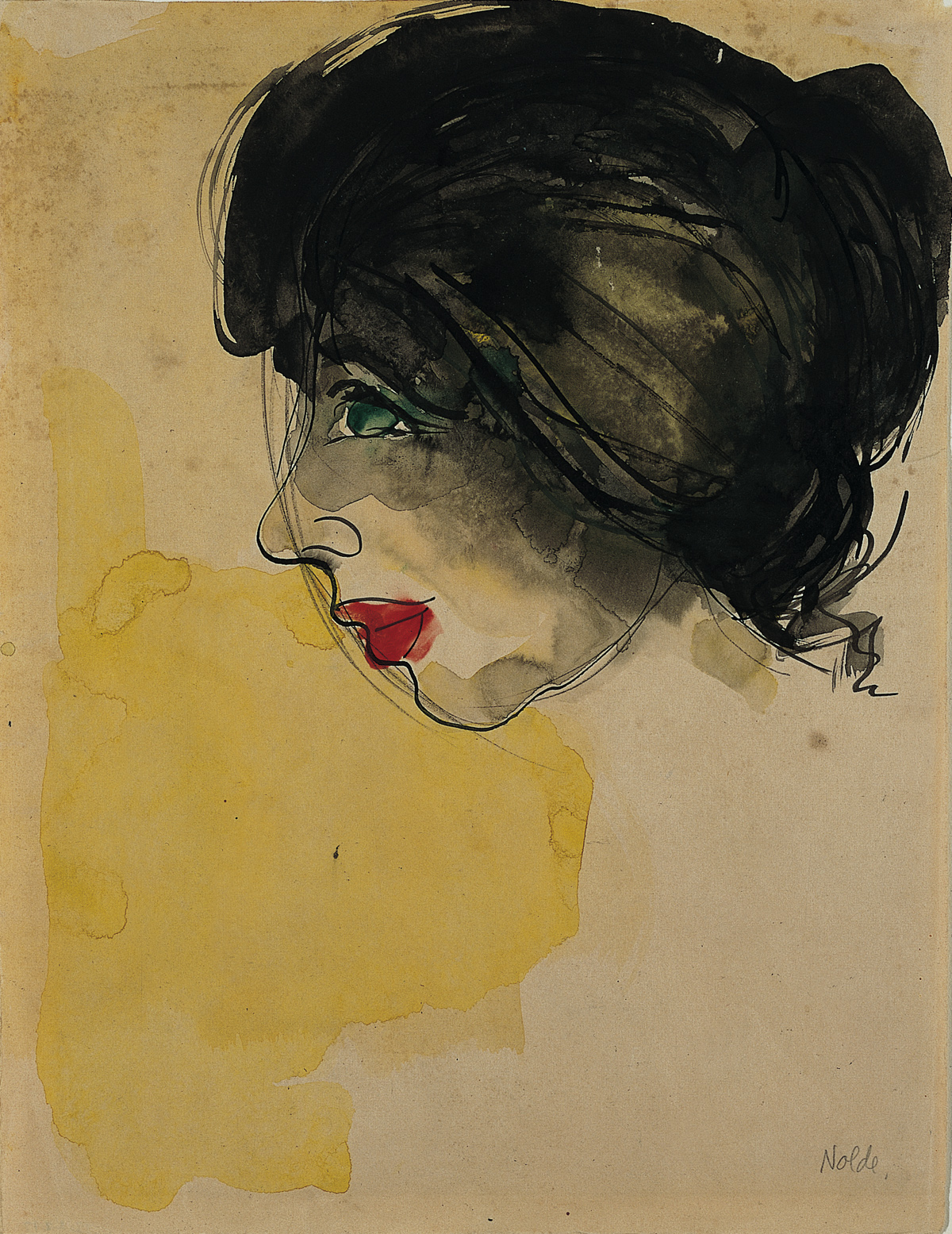 HEAD IN PROFILE , 1919, EMIL NOLDE (German, 1867-1956) Watercolor and India ink on tan wove paper 14-1/2 x 11-1/8 in. (36.8 x 28.3 cm) Norton Simon Museum, The Blue Four Galka Scheyer Collection © Nolde Stiftung Seebüll, Germany
HEAD IN PROFILE , 1919, EMIL NOLDE (German, 1867-1956) Watercolor and India ink on tan wove paper 14-1/2 x 11-1/8 in. (36.8 x 28.3 cm) Norton Simon Museum, The Blue Four Galka Scheyer Collection © Nolde Stiftung Seebüll, Germany
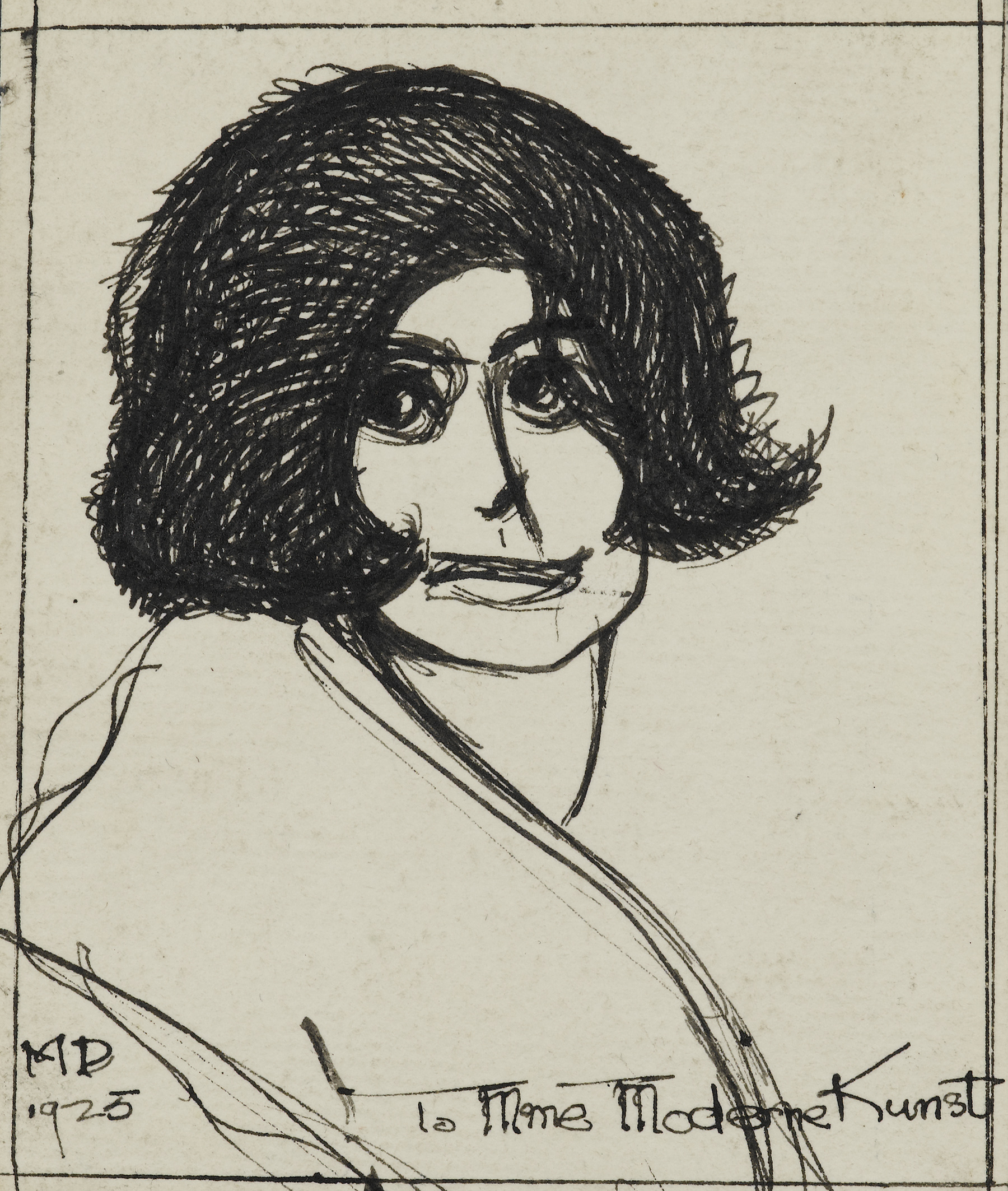 PORTRAIT OF GALKA SCHEYER , 1925, MAYNARD DIXON (American, 1875-1946) India ink on wove paper, comp: 3-3/4 x 3-1/4 in. (9.5 x 8.3 cm); sheet: 4 x 3-3/8 in. (10.2 x 8.6 cm) Norton Simon Museum, The Blue Four Galka Scheyer Collection © Norton Simon Museum
PORTRAIT OF GALKA SCHEYER , 1925, MAYNARD DIXON (American, 1875-1946) India ink on wove paper, comp: 3-3/4 x 3-1/4 in. (9.5 x 8.3 cm); sheet: 4 x 3-3/8 in. (10.2 x 8.6 cm) Norton Simon Museum, The Blue Four Galka Scheyer Collection © Norton Simon Museum
Highlights of “The Blue Four Collection” Book
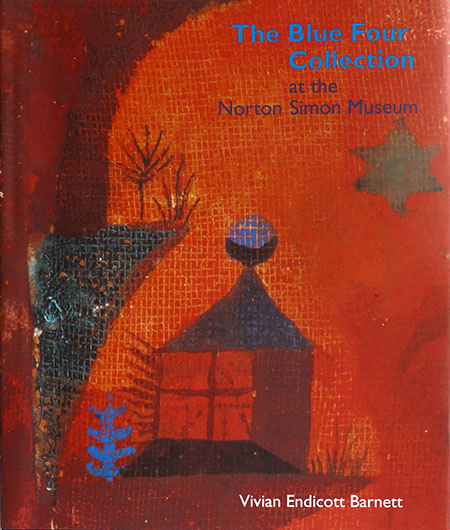 The Blue Four Collection
The Blue Four Collection
At The Norton Simon Museum
Author: Vivian Endicott Barnett
Yale University Press in association with the
Norton Simon Art Foundation
500 pages
Hardbound, 12 x 10 in. (29,2 x 25 cm)
ISBN 0-300-09635-6
Regular Price: $100.00
Special Price: $40.00
Link to The Museum Shop
There is a lengthy introduction to the book that provides biographical detail about Scheyer, as well as extensive excerpts from her correspondence.
This exceptional book presents over 500 works from the collection, reproducing 237 in full color and 496 black-and-white illustrations. It features numerous works by the Blue Four, as well as those by such European artists as Pablo Picasso, Fernand Léger, Emil Nolde, Kurt Schwitters, and El Lissitzky. A final section is devoted to artists Scheyer knew in California such Edward Weston, Imogen Cunningham, and Diego Rivera. Each entry contains full documentation and an essay situating the work within a historical context.

RIGHT: Lyonel Feininger, “Near the Palace” Winter 1914-1915, Oil on canvas, 100,5 x 80 cm (39 5/8 x 311/2 in.)

Lyonel Feininger, “Sultry Sky”,1949, watercolor. India ink, and pencil on laid paper, image 30,3 x 48,8 cm (117/8 x 183/8 in.)

LEFT: Lyonel Feininger, “Two-masted Ship with Sun”, 1937, Woodcut on thin wove paper, image, 7,2 x 6,7 cm (2 7/8 x 2 5/8 in.); sheet, 27,8 x 21,6 cm (11 x 81/2 in.)RIGHT: Lyonel Feininger, “Still Life with Vase”, 1937, Woodcut on thin wove paper, image, 7,5 x 9,8 cm (3 x 3 7/8 in.); sheet, 27,8 x 21,6 cm (11 x 81/2 in.)
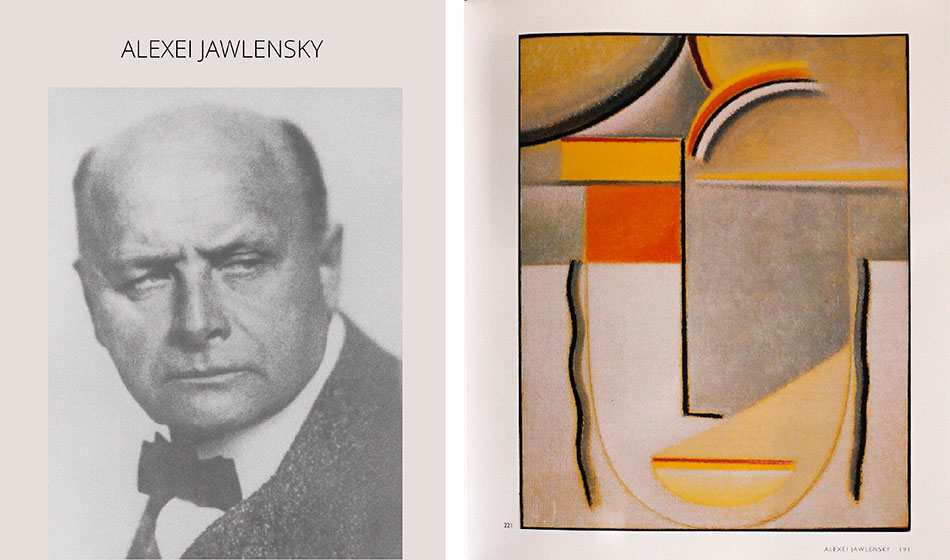
RIGHT: Alexei Jawlensky, “Abstract Head: Winter Ringing”, 1927, Oil and pencil on textured cardboard, 42,4 x 32,5 cm (163/4 x 123/4 in.)
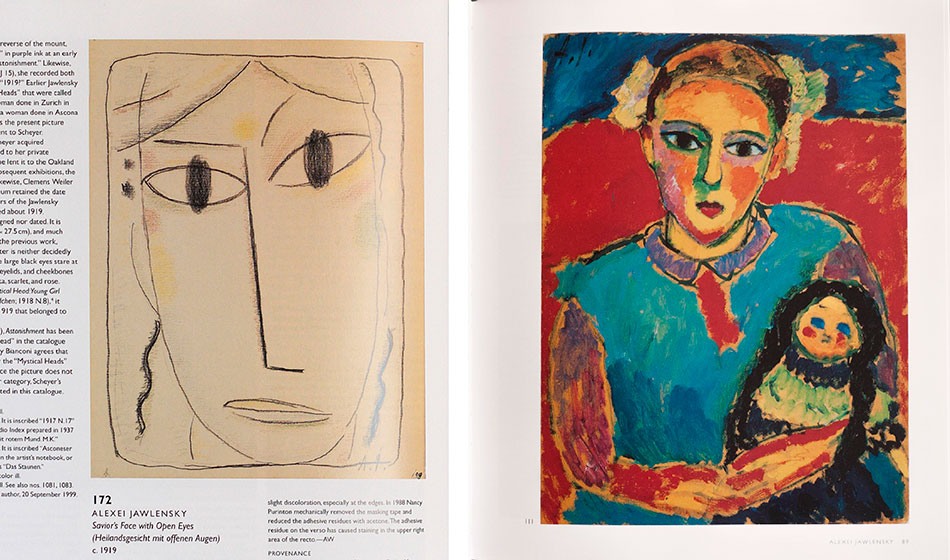
LEFT: Alexei Jawlensky, “Savior’s Face with Open Eyes” , c.1919, Colored pencils and pencil on laid paper, 26 x 20,2 cm (101/4 x 8 in.)
RIGHT: Alexei Jawlensky, “Child with Doll”, c.1910, Oil on paper mounted on cardboard, 69,1 x 51,1 cm (271/4 x 201/8 in.)
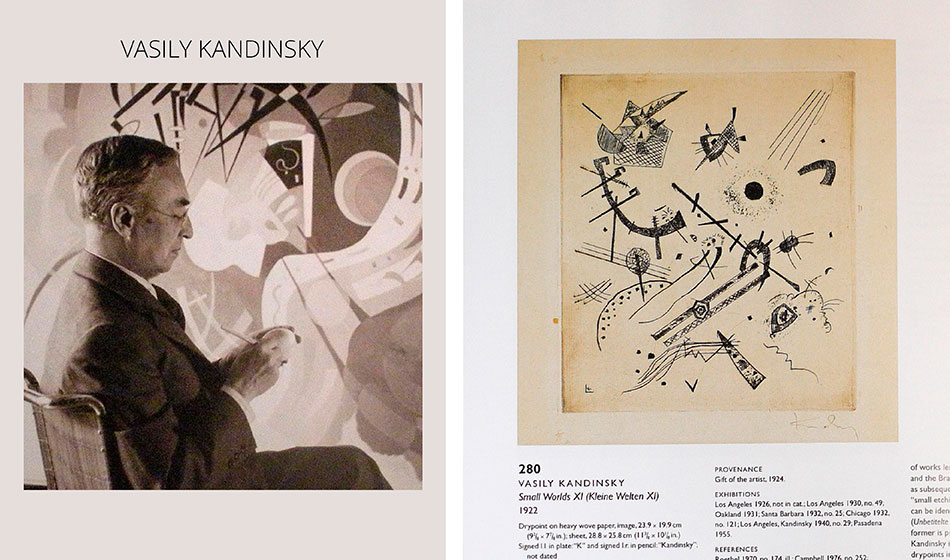
RIGHT: Vasily Kandisnsky, “Small Worlds XI”, 1922, Drypoint on heavy wove paper, image, 23,9 x 19,9 cm (93/8 x 77/8 in.); sheet, 28,8 x 25,8 cm (113/8 x 101/8 in.)
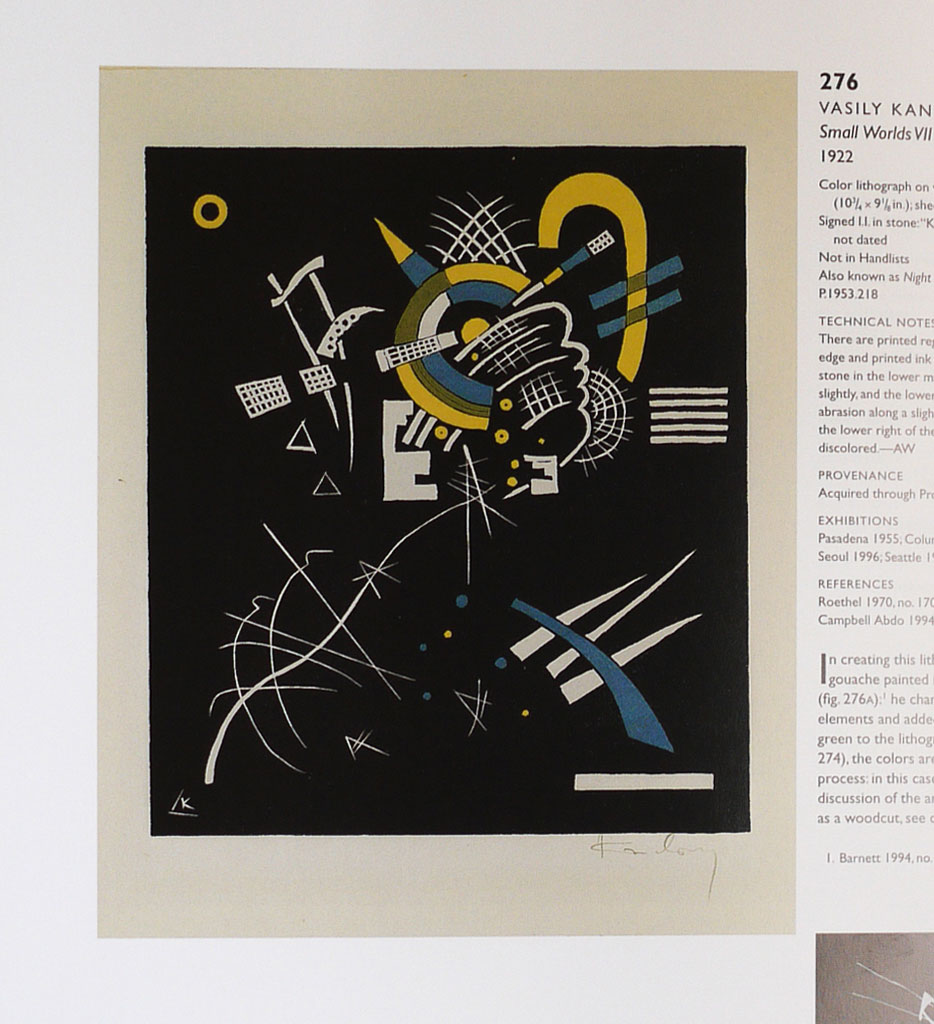
Vasily Kandinsky: “Small Worlds VII”, 1922, Color Lithograph on wove paper, image, 27,2 x 23,2 cm (103/4 x 91/8 in.): sheet, 35,7 x 28,5 cm (14 x 111/4 in.)
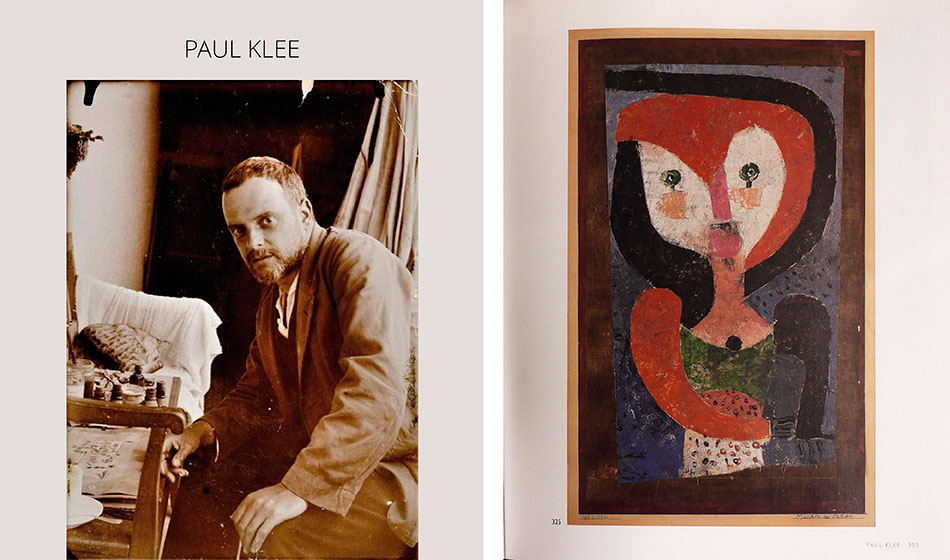
RIGHT: Paul Klee, “Maid of Saxony”, 1922, Oil on oil-primed muslin with metalic paper strips mounted on thin cardboard, image, 34,5 x 20,7 cm (135/8 x 81/8 in.); mount, 38.3 x 23.4 cm (151/8 x 91/4 in.)
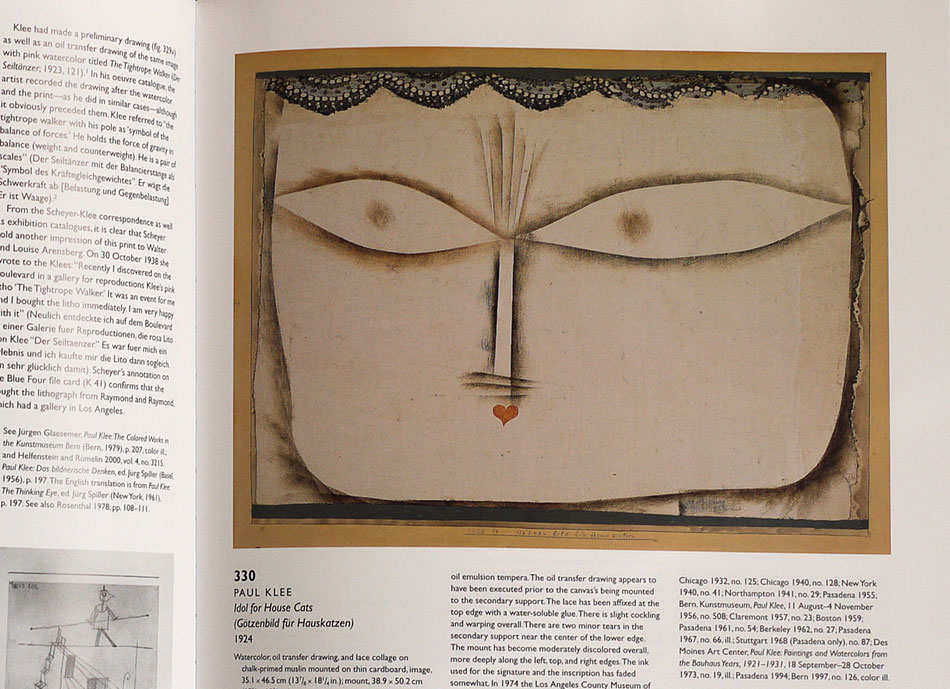
PAUL KLEE: “Idol for House Cats”, 1924, Watercolor, oil transfer drawing, and lace collage on chalk-primed muslin mounted on thin cardboard, image, 35,1 x 46,5 cm (137/8 x 181/4 in.); mount, 38,9 x 50,2 cm (153/8 x 193/4 in.)
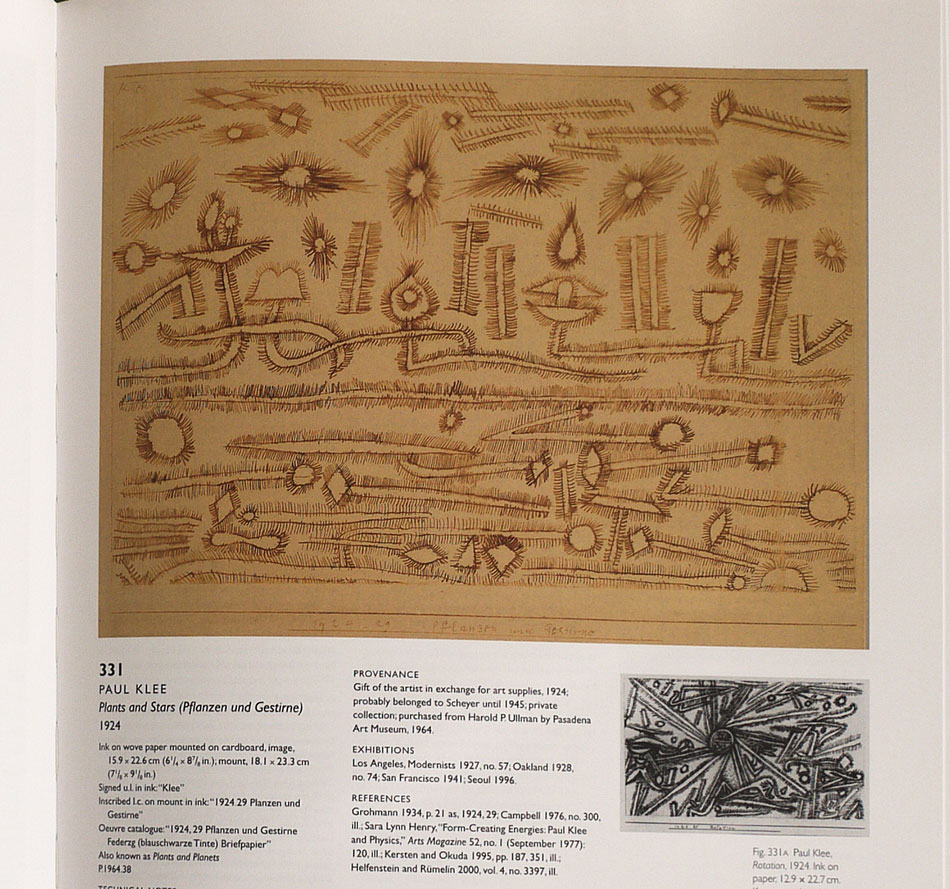
PAUL KLEE: “Plants and Stars”, 1924, Ink on wove paper mounted on cardboard, image, 15,9 x 22,6 cm (61/4 x 87/8 in.); mount, 18,1 x 23,3 cm (71/8 x 91/8 in.)
Maven of Modernism is organized by Curator Gloria Williams Sander
The Norton Simon Museum
411 W. Colorado Blvd. at Orange Grove Boulevard, Pasadena, Calif.
at the intersection of the Foothill (210) and Ventura (134) freeways
For general Museum information, please call (626) 449-6840 or visit www.nortonsimon.org
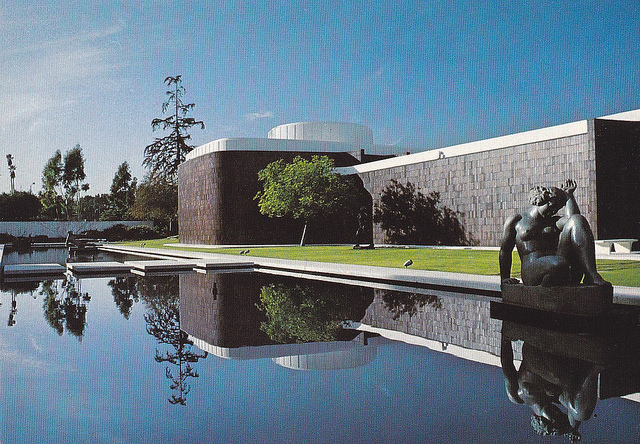
About the Norton Simon Museum
The Norton Simon Museum is known around the world as one of the most remarkable private art collections ever assembled. Over a 30-year period, industrialist Norton Simon (1907–1993) amassed an astonishing collection of European art from the Renaissance to the 20th century, and a stellar collection of South and Southeast Asian art spanning 2,000 years. Modern and Contemporary Art from Europe and the United States, acquired by the former Pasadena Art Museum, also occupies an important place in the Museum’s collections.
The Museum houses more than 12,000 objects, roughly 1,000 of which are on view in the galleries and gardens. Two temporary exhibition spaces feature rotating installations of artworks not on permanent display.